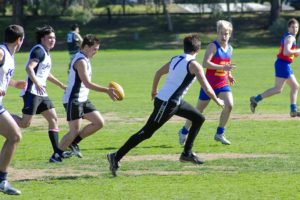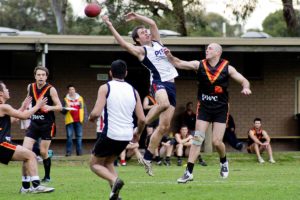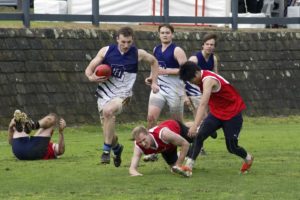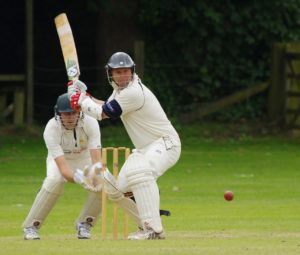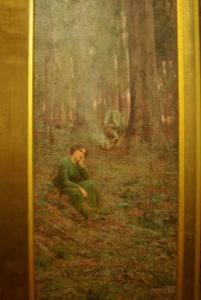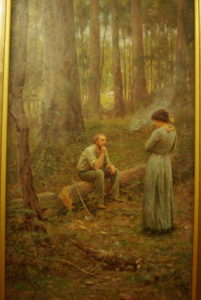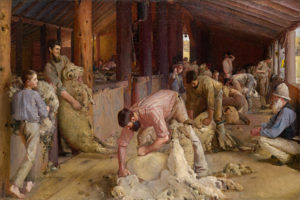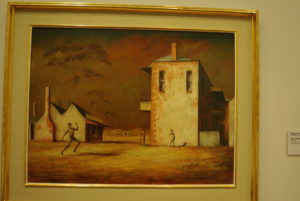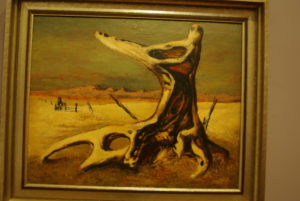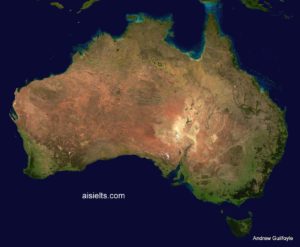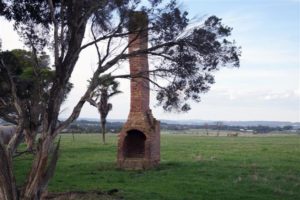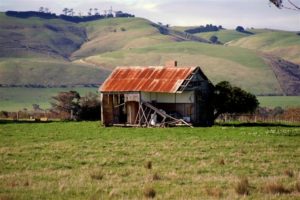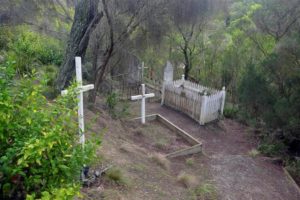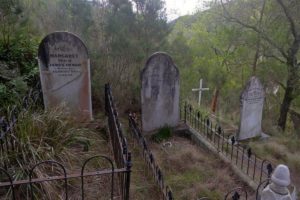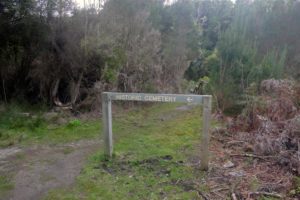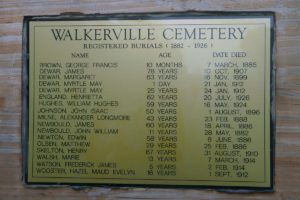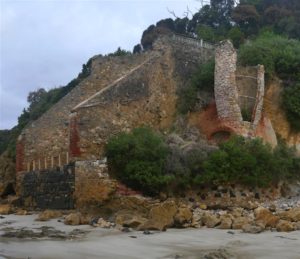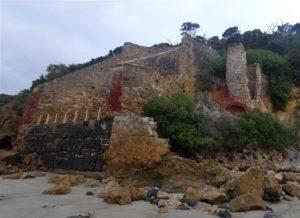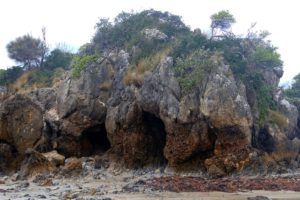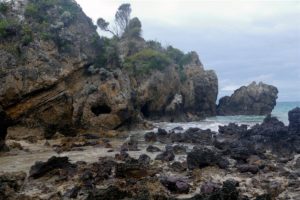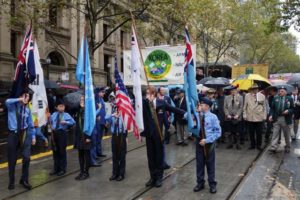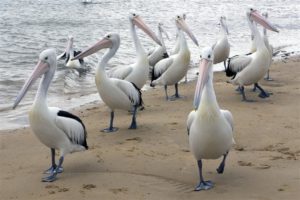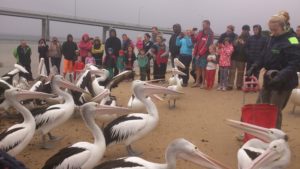As I mentioned in my last ‘Cultural Insight’ post, I’m from Melbourne, the home of Australian Rules Football, the only true football. I mentioned in Cultural Insight 21 that cricket is a summer sport, since it needs good weather. This caused a problem in the early days of my country. What could the cricketers do in the winter in order to stay fit? Answer: they needed a new game, and the first rules for the game were written in 1859. This is actually earlier than most other football codes in the world, including soccer!
Australian football is played on cricket grounds – large, oval-shaped, with natural earth and grass. If it is raining [this is a winter sport], this can make it quite muddy for the players. There are 18 players on either side trying to kick an oval shaped ball between ‘goal posts’ on either side of the large ground, and so it can move quite fast. There is catching, running, bouncing, and hand-passing, and the rules allow ‘tackling’, and thus the game is fairly rough and physical.
In the true spirit of the origins of the game, I have included some pictures of ‘local’ amateur football, rather than the professional AFL (the Australian Football League). These pictures show everything I have said: the fast, rough, muddy, but highly entertaining nature of the sport – now Australia’s most popular. If you are in my country, try going to an AFL game.


